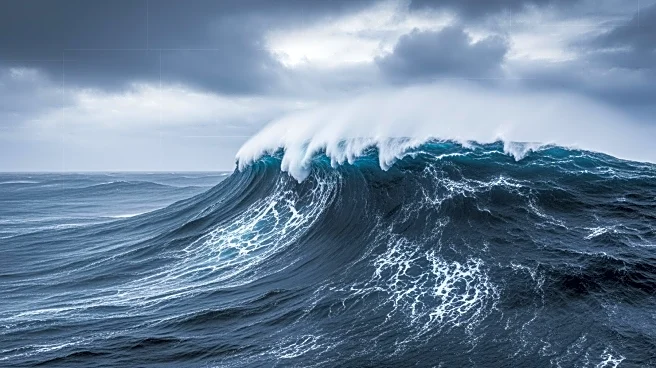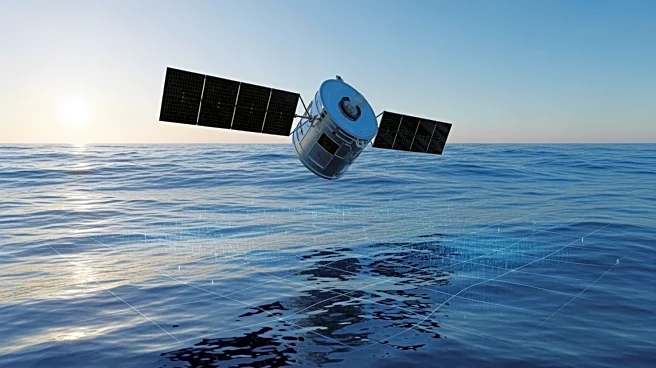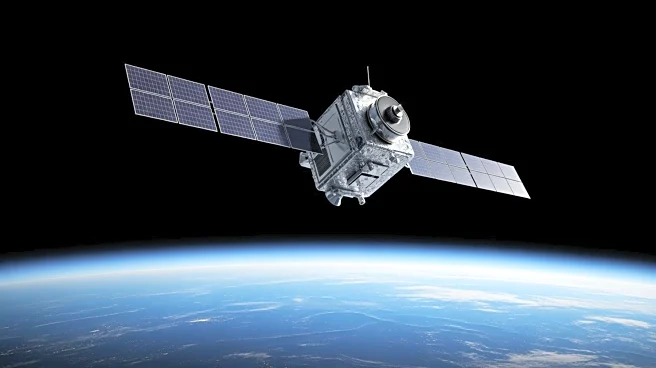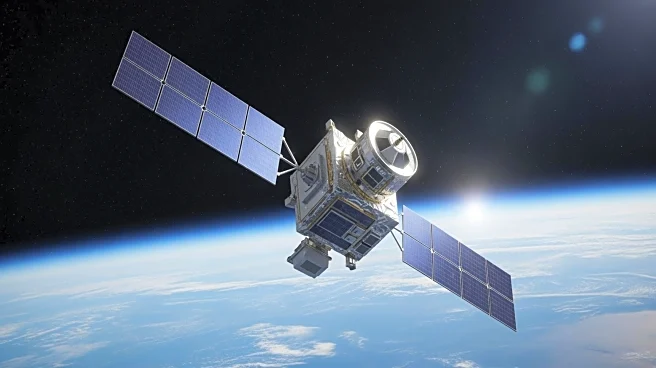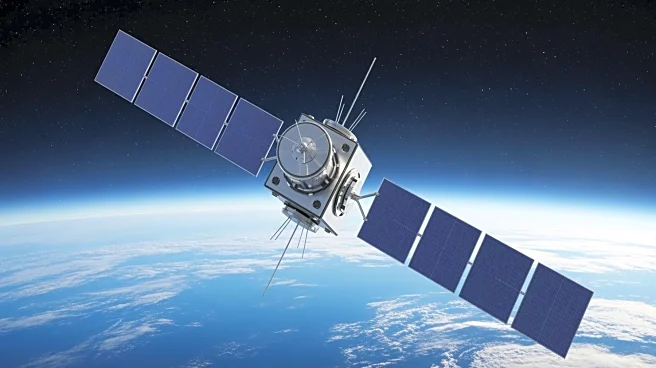What's Happening?
In December 2024, a colossal Pacific storm unleashed waves of unprecedented magnitude, visible even from space. These towering swells shattered records, with some waves surpassing 115 feet. The storm,
identified as Storm Eddie, was tracked by the European Space Agency's SWOT satellite, offering new insights into how ocean energy travels across vast distances. The storm's waves traveled extraordinary distances, impacting regions far from the storm's original location. The findings are a breakthrough in understanding the behavior of extreme waves and their potential consequences for coastal areas.
Why It's Important?
The record-breaking waves highlight the power of extreme weather events and their impact on coastal regions. The ability of waves to travel vast distances underscores the need for improved understanding of ocean dynamics and the potential consequences for coastal infrastructure. The findings offer valuable insights into the behavior of extreme waves, which is crucial for coastal planning and storm preparedness. The situation raises questions about the role of climate change in intensifying storm activity and the need for investment in adaptive measures to protect vulnerable communities.
What's Next?
The study conducted by Fabrice Ardhuin and his team marks a milestone in satellite-based oceanography. The findings may prompt further research into the connection between extreme storms and climate change. Scientists will continue to investigate whether these massive storms are becoming more frequent or intense due to shifts in global climate patterns. The ongoing challenge is determining how much of this increase in intensity is driven by human-induced climate change versus natural variability. The situation highlights the importance of accurate data on wave behavior to protect vulnerable coastal areas.
Beyond the Headlines
The record-breaking waves in the Pacific storm highlight broader challenges related to climate change and ocean dynamics. The situation underscores the importance of understanding the behavior of extreme waves and their potential consequences for coastal infrastructure. The findings raise questions about the role of climate change in intensifying storm activity and the need for investment in adaptive measures to protect vulnerable communities. As scientists refine their models and increase their understanding of wave dynamics, we may be better equipped to anticipate and mitigate the impacts of these monstrous waves on coastal communities and infrastructure.
